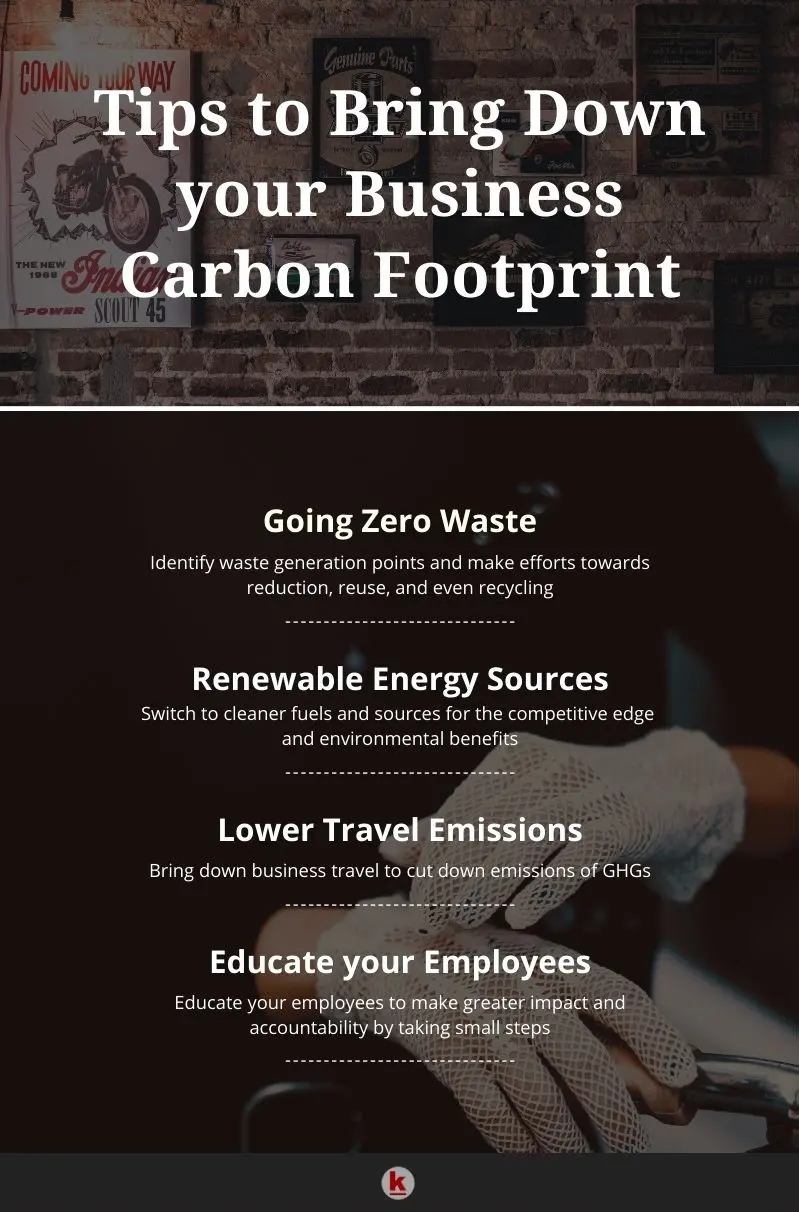In these dark times of the coronavirus being declared as a pandemic, we have come to realize that the Environment is at the greatest risk.
With ecosystems breaking down, glaciers melting and pollution at its peak, saving our environment is at the forefront. It must be addressed and it must be addressed now. Everyone is responsible. There are no exemptions or excuses. We all float alike - individuals, businesses, governments, etc.
People at their own ends are awakening to growing changes in the environment and are feeling the chill, and thus have started to contribute in their little ways. Governments on the other end, have stepped up efforts in the form of different international pacts, summits, and suitable measures to fulfill the goals. So, when it comes to businesses, the calling becomes even more intense and also measurable. The first step is determining the impact of the business activities on the environment.
This preliminary step is often the most taxing!
Business carbon footprint! What is it?
A business carbon footprint is the elementary assessment of climate risks by the identification of hotspots of emissions along your value chain. Over the years, as the concerns around climate have risen, businesses measure and report their carbon footprint to all the stakeholders to keep everyone updated about their sustainability actions.
If this sounds confusing, let us try to define what carbon footprint is?
A carbon footprint is the most suitable estimate of the greenhouse gases produced during the direct and indirect operation of a product or business. Gases like CO2 (carbon dioxide), CH4 (methane), N2O (nitrous oxide), HFCs (hydrofluorocarbons), etc. are often accounted for in the calculation.
What is a Business Carbon Footprint Calculator?
Carbon footprints have been used globally to measure the emissions of GHGs annually. Data is compiled from a wide variety of industries including travel, operations, logistics, etc. to get an accurate account.
- The first step to the calculation is knowing where to start and what the inclusions are. These will define the boundaries of the footprint. As per the requirements, you have to include complete direct Scope 1 and indirect Scope 2 emissions, from the operations in addition to material Scope 3 emissions that comprise the direct category of emissions from outside the operational environment of the organization.
- Let us see what are the three Scopes of GHG Emissions:
- SCOPE 1: These are direct GHG emissions that are under the control of the company like the consumption of fuel, refrigerant systems, on-site waste facilities, etc.
- SCOPE 2: These include all the indirect emissions of GHG that include heat, electricity, water heaters, HVAC equipment, etc.
- SCOPE 3: These are those GHG emissions that result from the company but are not under its control. Various things that fall under its ambit are business travel, public transport use by the company employees, even transportation of the fuel that has been purchased by the company.
This classification helps to break the emissions in different sources and helps in the identification of hotspots that have to be dealt with on a priority basis. Once you have this information in place, you have to make a selection of emission factors for every source to finally calculate tonnes of CO2 emitted over a specified period. Once your data is in place, you have to now select a proper methodology for the calculation of your footprint. You may either pick up a basic spreadsheet or an internationally recognized standard.
Business carbon footprint calculation shows the way forward to organizations for reducing emissions and setting robust targets.
How to Bring Down the Business Carbon Footprint?
In this world brimming with competition, running a successful business is a hard task but what is even harder is running a one which is accountable for its carbon emissions. Climate change is a real phenomenon that will change the way businesses are run in the coming times. The cost of operations will rise as the resources dwindle and more stringent governmental regulations come in place. This will mean, to remain in business you will have to neutralize your carbon footprint. Imagine if you handle this now, how much ahead will you get on the growth curve?
Even consumers are showing an inclination towards eco-friendly brands and products. No doubt going forward this will become the norm.
Here are some simple yet sound ways businesses can adopt to become more carbon responsible.
Zero Waste
Sounds difficult! But if adopted this will have a lasting impact on the carbon footprint target. This can be done by identifying the main waste generation points, their management process, and the disposal. You can channelize your efforts towards reduction, reuse, and even recycle the products. Other small steps can include adopting a paperless approach, using eco-friendly products, donating old electric equipment, etc.
Renewable Energy Sources
It is time businesses reduce energy consumption and switch to cleaner fuels and sources. This not only gives a better competitive edge but also yields many environmental benefits. Solar power panels are a good bet to start and can also bring you many federal tax credits.
Lower Business Travel Emissions
All modes of modern transport are the largest sources of emissions of GHGs. By bringing down business travel, a significant improvement can be made on the carbon footprint of your business. Simple steps like encouraging your employees to cycle to work, or facilitating carpooling can go a long way to take it forward.
Educate your Employees
One of the most impactful ways is to involve your workforce in the effort. The businesses must empower their employees to be able to see their ability to bring about positive change in their immediate environment. It is important to educate your team on accountability. Whether it's on going zerowaste or switching to the green internet, simple talks or policies that help save energy can act as a powerful trigger for everyone to realize the importance of climate change.
Business carbon footprint can be very effective in cutting energy costs and bringing down emissions of GHGs. It is not always that the corporate has to be at odds with each other. Both can co-exist if they respect nuances that define each of them.





Leave your comments
Post comment as a guest